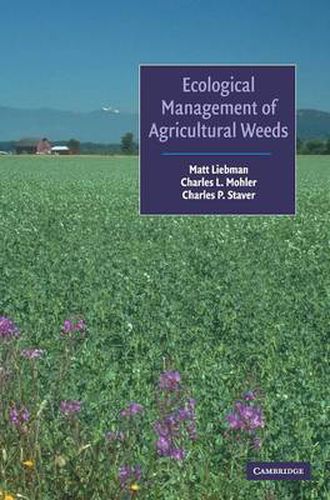Readings Newsletter
Become a Readings Member to make your shopping experience even easier.
Sign in or sign up for free!
You’re not far away from qualifying for FREE standard shipping within Australia
You’ve qualified for FREE standard shipping within Australia
The cart is loading…






Concerns over environmental and human health impacts of conventional weed management practices, herbicide resistance in weeds, and rising costs of crop production and protection have led agricultural producers and scientists in many countries to seek strategies that take greater advantage of ecological processes and thereby allow a reduction in herbicide use. This book provides principles and practices for ecologically based weed management in a wide range of temperate and tropical farming systems. After examining weed life histories and processes determining the assembly of weed communities, the authors describe how tillage and cultivation practices, manipulations of soil conditions, competitive cultivars, crop diversification, grazing livestock, arthropod and microbial biocontrol agents, and other factors can be used to reduce weed germination, growth, competitive ability, reproduction, and dispersal. Special attention is given to the evolutionary challenges that weeds pose and the roles that farmers can play in the development of new weed management strategies.
$9.00 standard shipping within Australia
FREE standard shipping within Australia for orders over $100.00
Express & International shipping calculated at checkout
Concerns over environmental and human health impacts of conventional weed management practices, herbicide resistance in weeds, and rising costs of crop production and protection have led agricultural producers and scientists in many countries to seek strategies that take greater advantage of ecological processes and thereby allow a reduction in herbicide use. This book provides principles and practices for ecologically based weed management in a wide range of temperate and tropical farming systems. After examining weed life histories and processes determining the assembly of weed communities, the authors describe how tillage and cultivation practices, manipulations of soil conditions, competitive cultivars, crop diversification, grazing livestock, arthropod and microbial biocontrol agents, and other factors can be used to reduce weed germination, growth, competitive ability, reproduction, and dispersal. Special attention is given to the evolutionary challenges that weeds pose and the roles that farmers can play in the development of new weed management strategies.